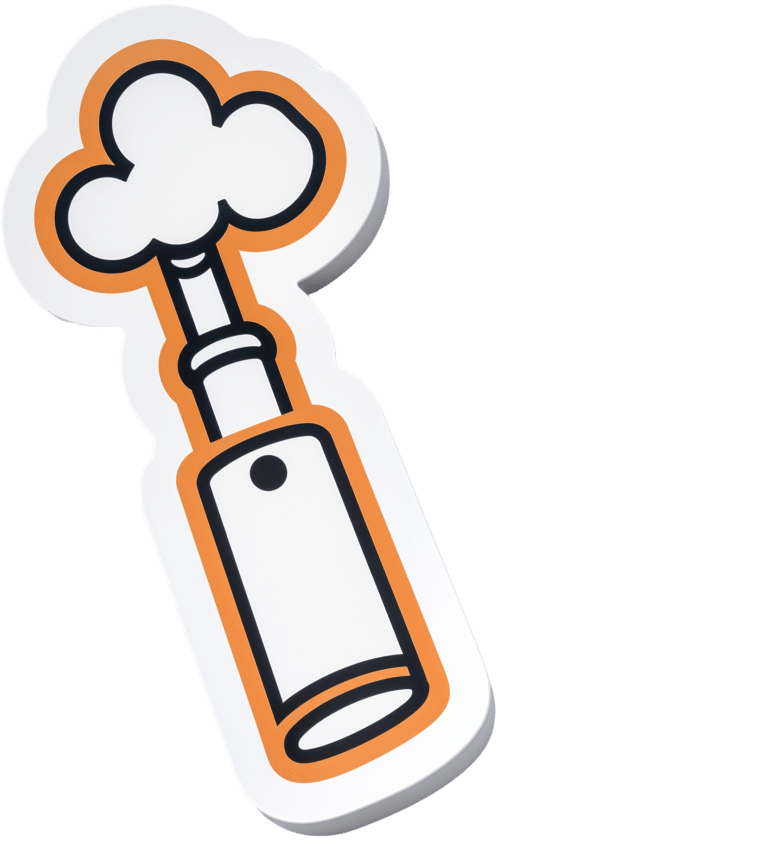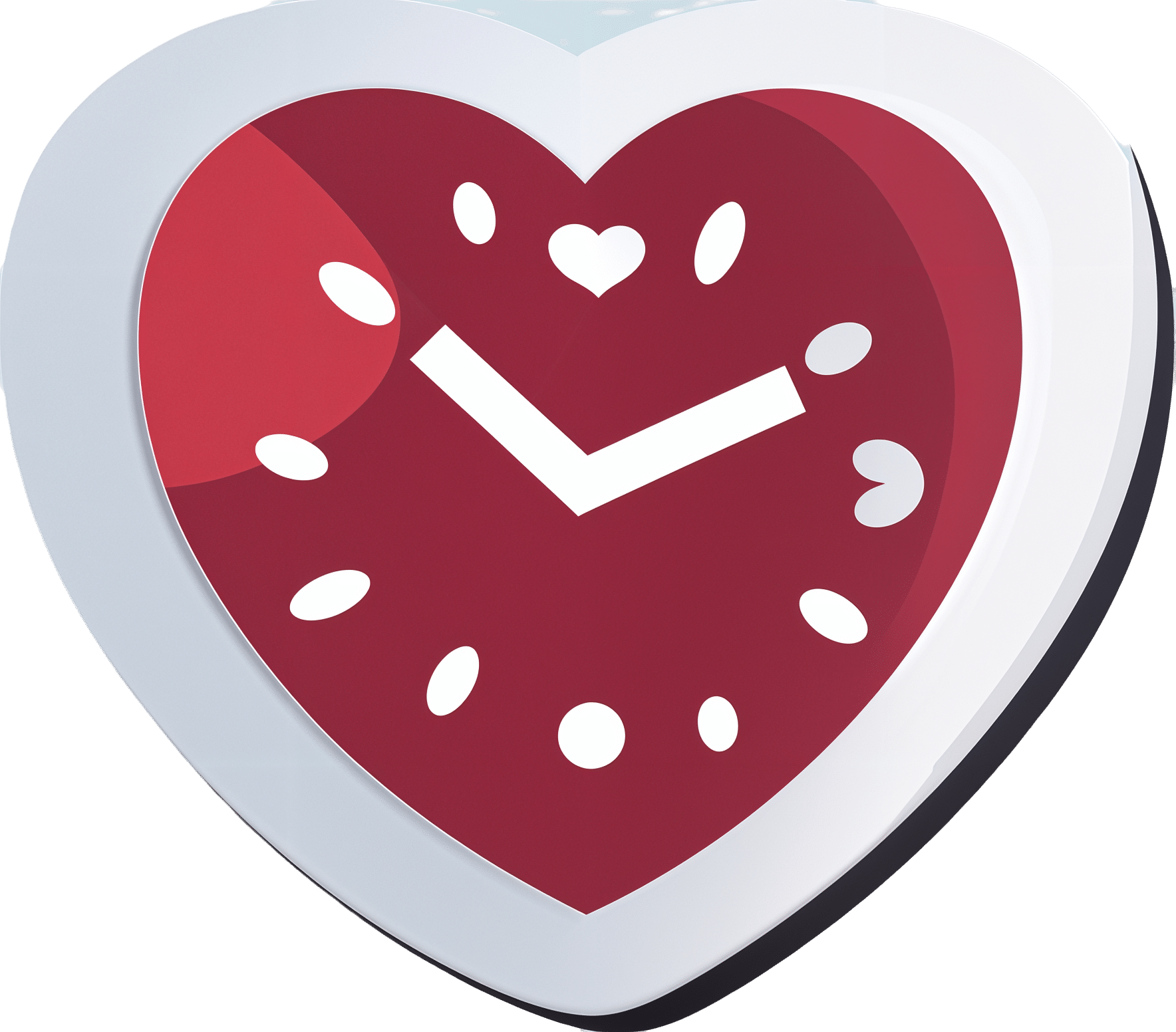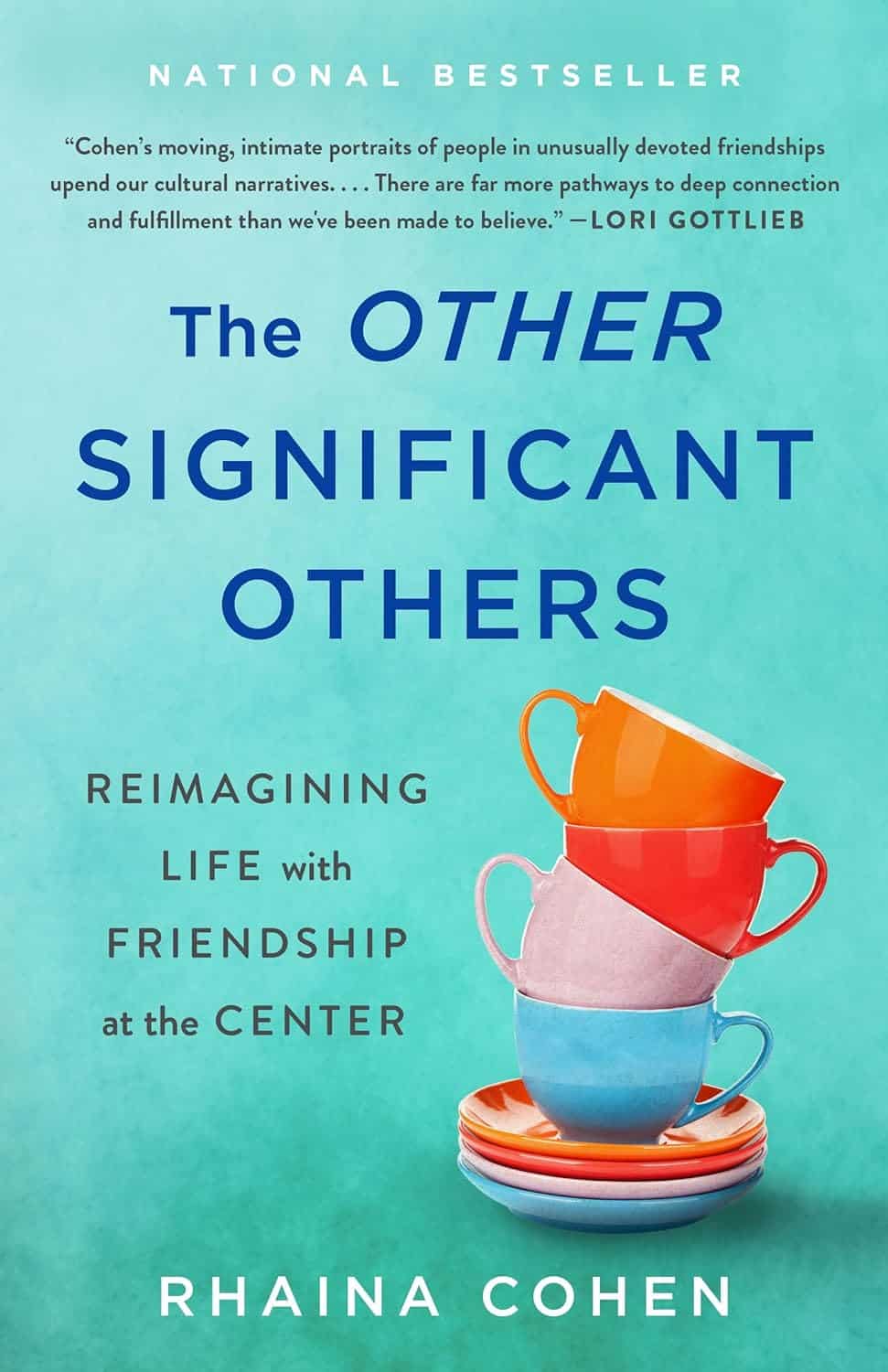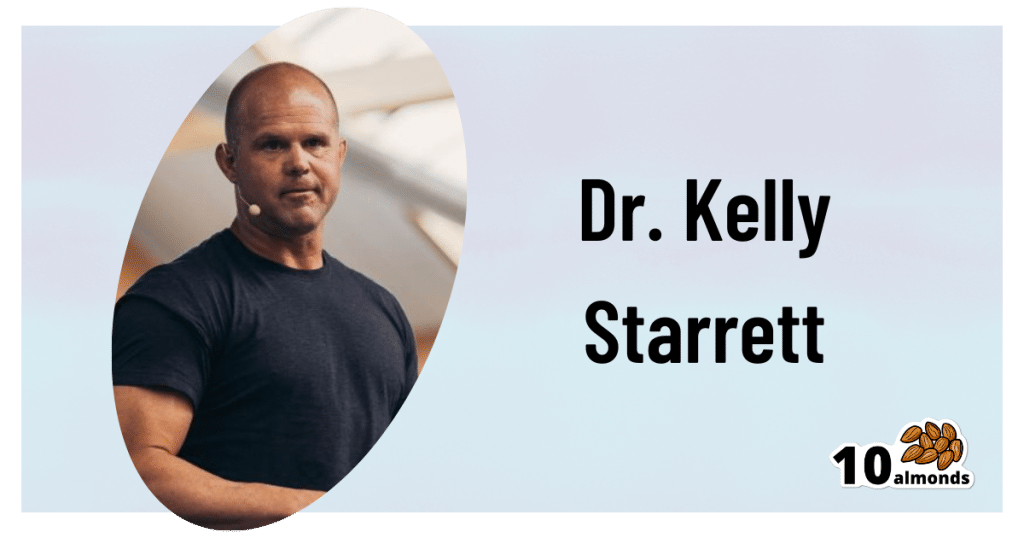
Simply The Pits: These Underarm Myths!
10almonds is reader-supported. We may, at no cost to you, receive a portion of sales if you purchase a product through a link in this article.
Are We Taking A Risk To Smell Fresh As A Daisy?

Yesterday, we asked you for your health-related view of underarm deodorants.
So, what does the science say?
They can cause (or increase risk of) cancer: True or False?
False, so far as we know. Obviously it’s very hard to prove a negative, but there is no credible evidence that deodorants cause cancer.
The belief that they do comes from old in vitro studies applying the deodorant directly to the cells in question, like this one with canine kidney tissues in petri dishes:
Antiperspirant Induced DNA Damage in Canine Cells by Comet Assay
Which means that if you’re not a dog and/or if you don’t spray it directly onto your internal organs, this study’s data doesn’t apply to you.
In contrast, more modern systematic safety reviews have found…
❝Neither is there clear evidence to show use of aluminum-containing underarm antiperspirants or cosmetics increases the risk of Alzheimer’s Disease or breast cancer.
Metallic aluminum, its oxides, and common aluminum salts have not been shown to be either genotoxic or carcinogenic.❞
(however, one safety risk it did find is that we should avoid eating it excessively while pregnant or breastfeeding)
Alternatives like deodorant rocks have fewer chemicals and thus are safer: True or False?
True and False, respectively. That is, they do have fewer chemicals, but cannot in scientific terms be qualifiably, let alone quantifiably, described as safer than a product that was already found to be safe.
Deodorant rocks are usually alum crystals, by the way; that is to say, aluminum salts of various kinds. So if it was aluminum you were hoping to avoid, it’s still there.
However, if you’re trying to cut down on extra chemicals, then yes, you will get very few in deodorant rocks, compared to the very many in spray-on or roll-on deodorants!
Soap and water is a safe, simple, and sufficient alternative: True or False?
True or False, depending on what you want as a result!
- If you care that your deodorant also functions as an antiperspirant, then no, soap and water will certainly not have an antiperspirant effect.
- If you care only about washing off bacteria and eliminating odor for the next little while, then yes, soap and water will work just fine.
Bonus myths:
There is no difference between men’s and women’s deodorants, apart from the marketing: True or False?
False! While to judge by the marketing, the only difference is that one smells of “evening lily” and the other smells of “chainsaw barbecue” or something, the real difference is…
- The “men’s” kind is designed to get past armpit hair and reach the skin without clogging the hair up.
- The “women’s” kind is designed to apply a light coating to the skin that helps avoid chafing and irritation.
In other words… If you are a woman with armpit hair or a man without, you might want to ignore the marketing and choose according to your grooming preferences.
Hopefully you can still find a fragrance that suits!
Shaving (or otherwise depilating) armpits is better for hygiene: True or False?
True or False, depending on what you consider “hygiene”.
Consistent with popular belief, shaving means there is less surface area for bacteria to live. And empirically speaking, that means a reduction in body odor:
However, shaving typically causes microabrasions, and while there’s no longer hair for the bacteria to enjoy, they now have access to the inside of your skin, something they didn’t have before. This can cause much more unpleasant problems in the long-run, for example:
❝Hidradenitis suppurativa is a chronic and debilitating skin disease, whose lesions can range from inflammatory nodules to abscesses and fistulas in the armpits, groin, perineum, inframammary region❞
Read more: Hidradenitis suppurativa: Basic considerations for its approach: A narrative review
And more: Hidradenitis suppurativa: Epidemiology, clinical presentation, and pathogenesis
If this seems a bit “damned if you do; damned if you don’t”, this writer’s preferred way of dodging both is to use electric clippers (the buzzy kind, as used for cutting short hair) to trim hers down low, and thus leave just a little soft fuzz.
What you do with yours is obviously up to you; our job here is just to give the information for everyone to make informed decisions whatever you choose 🙂
Take care!
Don’t Forget…
Did you arrive here from our newsletter? Don’t forget to return to the email to continue learning!
Recommended
Learn to Age Gracefully
Join the 98k+ American women taking control of their health & aging with our 100% free (and fun!) daily emails:
-
What’s Your Personal Life Expectancy?
10almonds is reader-supported. We may, at no cost to you, receive a portion of sales if you purchase a product through a link in this article.
Tick Tock… Goes the Death Clock?
This fun little test will ask a few questions about you and your lifestyle, and then make a prediction of your personal life expectancy, based on global statistics from the World Health Organisation.
And then the countdown starts… Literally, it generates a clock for you to see your life-seconds ticking away—this may or may not delight you, but it sure is a curiosity.
Their “Letters” page has a lot of reactions from people who just got their results (spoiler: people’s perspectives on life vary a lot)
Who mostly uses this service? According to their stats page, it’s mostly curious under-45s, with gradually less interest in knowing about it from 45 onwards… until the age of 70, when suddenly everyone wants to know about it again!
So Is It Possible To Pause The Clock On Aging? – Q&A Spotlight Interview
Life extension is sometimes viewed as the domain of the super-rich, and with less than half of Millennials (and almost none of Gen-Z) having retirement plans, often those of us who aren’t super-rich have more mundane (and immediate!) goals than living to 120.
And yet…
Middle class and working class life-extensionists do exist, even if not garnering the same media attention. We think that’s strange—after all, while the whimsies of the super-rich may be entertaining to read about, it’s not nearly as applicable to most people as more relatable stories:
- The twenty-something who gives up smoking and adds (healthier!) years to their life
- The thirty-something who adopts a plant-based diet and is less likely to die of heart disease
- The forty-something who stops drinking, and avoids health conditions and mishaps alike
- The fifty-something who reconsiders their health plan in light of their changing body
- The sixty-something who takes up yoga, or chess, or salsa dancing
- The seventy-something who gets asked what their secret is
- …and so on
But these are ideas, textbook examples. What if we make it more personal?
We interviewed 10 Almonds subscriber and longevity enthusiast Anastasia S., and here’s what she had to say:
Q: What does life extension mean to you, in your life?
A: To me, the key is healthy life extension. People often joke “I don’t want to live longer; the last years are the worst!” but they’re missing the point that after a certain age, those difficulties are coming whether they come at 50 or 70 or 90. Personally, I’d rather keep them at bay if I can.
Q: How do you do that?
A: Firstly, which won’t be a shock: good diet and exercise. Those two things are possibly the biggest active influences on my longevity. I’m vegan, which I don’t think is outright necessary for good health but done right, it can certainly be good. In this house we eat a lot of whole grains, beans, lentils, vegetables in general, nuts too. As for exercise, I do 30–60 minutes of Pilates daily; it’s nothing fancy and it’s just me in my pajamas at home, but it keeps me strong and fit and supple. I also walk everywhere; I don’t even own a car. Beyond that… I don’t drink or smoke (probably the biggest passive influences on my longevity, i.e., things that aren’t there to make it shorter), and I try to take my sleep seriously, making sure to schedule enough time and prepare properly for it.
Q: Take your sleep seriously? How so?
A: Good “sleep hygiene” as some call it—I schedule a little wind-down time before sleep, with no glaring screens or main lights, making a space between my busy day and restful sleep, kicking anything requiring brainpower to the morning, and making a conscious choice not to think more about those things in the meantime. I take care to make my sleeping environment as conducive as possible to good sleep too; I have a good mattress and pillows, I make sure the temperature is cool but cosy. I have a pot of herbal tea on my bedside table—I hydrate a lot.
Q: Do you take any supplements?
A: I do! They’re mostly quite general though, just “covering my bases”, so to speak. I take a daily nootropic stack (a collection of supplements specifically for brain health), too. I buy them in bulk, so they don’t cost so much.
Q: This seems quite a healthy lifestyle! Do you have any vices at all?
A: I definitely drink more coffee than I probably should! But hey, nobody’s perfect. I do love coffee, though, and as vices go, it’s probably not too bad.
Q: How’s it all working out for you? Do you feel younger?
A: I’m 38 and sometimes I feel like a teenager; sometimes I feel like an old lady. But the latter is usually for social reasons, not health-related reasons. I do have streaks of gray in my hair though, and I love that! If people don’t notice my grays, then they often think I’m in my 20s, rather than pushing 40. A little while back, I was stopped in the street by someone wanting to sell me a change of household utilities provider, then she stopped herself mid-sentence and said “Oh but wait, you look a bit too young, never mind”. Most general metrics of health would put me in my 20s.
Q: That’s interesting that you love your gray hairs, for someone who wants to stay young; is it an exception?
A: It’s more that I want to minimize the problems that come with age, and not everything’s a problem. Gray hairs are cool; joint pain, not so much. A long life rich with experiences is cool; memory loss, not so much. So, I try to keep healthy, and wear my years as best I can.
Q: Sounds good to us; good luck with it!
A: Thank you; I do my best!
Here at 10 Almonds, we love featuring what our readers are doing to improve their health; if you’re willing to be featured in our newsletter, let us know by replying to this email (where an actual human will read it, we promise!)
Share This Post
-
Exercises for Sciatica Pain Relief
10almonds is reader-supported. We may, at no cost to you, receive a portion of sales if you purchase a product through a link in this article.
Jessica Valant is a physiotherapist and Pilates teacher, and today she’s going to demonstrate some exercise that relieve (and also correct the cause of) sciatica pain.
Back to good health
You will need a large strap for one of these exercises; a Pilates strap is great, but you can also use a towel. The exercises are:
Pelvic Rocking Exercise:
- Lie on your back, feet flat, knees bent.
- Gently rock your pelvis forwards and backwards (50% effort, no glute squeezing).
Leg Stretch with Strap:
- Straighten your left leg and loop the strap around the ball of your right foot.
- Gently straighten and bend your right leg while holding the strap.
- Perform a “nerve glide” by flexing and pointing your foot (not a stretch, just gentle movement).
- Repeat on the left leg.
Piriformis Stretch:
- Bend your right knee and place your left ankle over it (figure-four position).
- For a deeper stretch, hold your right thigh and pull your legs inwards.
Lower Back Release:
- Let your legs fall gently to one side after stretching each leg, opening the lower back.
Back Extension:
- Lie on your belly, placing your elbows down, palms flat.
- Optional: push up slightly into a back bend if it feels comfortable.
Seated Stretching:
- Finish by sitting cross-legged or on a chair.
- Inhale while raising your arms up, exhale while lowering them down, then reach sideways with your arms to stretch.
- Perform gentle neck stretches by tilting your ear to your shoulder on each side.
She recommends doing these exercises daily for at least a few weeks, though you should start to see improvement in your symptoms immediately. Nothing here should cause a problem or make things worse, but if it does, stop immediately and consult a local physiotherapist for more personalized advice.
For more on all of this, plus visual demonstrations, enjoy:
Click Here If The Embedded Video Doesn’t Load Automatically!
Want to learn more?
You might also like to read:
6 Ways To Look After Your Back
Take care!
Share This Post
-
The Other Significant Others – by Rhaina Cohen
10almonds is reader-supported. We may, at no cost to you, receive a portion of sales if you purchase a product through a link in this article.
As we get older, it’s a function of statistics that increasingly many of us are divorced or widowed. While some will—after whatever time seems right to them—get back into dating, what about those of us who decide that we won’t?
Rhaina Cohen explores the importance of friendship, mutual support, and (Platonic!) closeness and yes, even kinds of intimacy (for that too can be Platonic!) as we go on.
Even from a purely evolutionary approach, we are fundamentally social creatures, and while as individuals we may exist on a spectrum from reclusive to extroverted, we all thrive better when we at least have access to community and friends.
The style of the book is easy-reading and exploratory, and is very compelling as a call-to-arms for those who may wish to give/receive support to/from those with whom we are not necessarily sleeping.
Because at the end of the day, why should sex and/or romance be a required feature for legal protections? Aren’t we adults who can make our own decisions about whom we trust to care for us?
Bottom line: if you’re happily partnered and expect to pre-decease your partner, this book might not be directly important for you (it might for your partner, though). Everyone else? This book may be important at some point. That point might even be now already; only you know.
Click here to check out The Other Significant Others, and make your own choices in life!
Share This Post
Related Posts
-
The Gut Bacteria That Improve Your General Decision-Making In Life
10almonds is reader-supported. We may, at no cost to you, receive a portion of sales if you purchase a product through a link in this article.
As one YouTube commenter said, “Trust your gut, but make sure you have a trustworthy gut first”!
Dr. Tracey Marks, psychiatrist, explains how:
Gut feelings and more
As you probably know, the gut and brain communicate via the vagus nerve, making gut bacteria highly influential.
How influential? Here are some key points from the video:
- Healthier gut bacteria are linked to more cautious risk-taking and future-oriented decisions.
- Gut bacteria influence serotonin (95% produced in the gut), dopamine, and neurotransmitters essential for decision-making.
- People with good gut health prioritize fairness in decision-making.
- The gut influences decision-making via neurotransmitter production, vagus nerve signaling, and inflammation control.
Gut bacteria produce metabolites (beyond the neurotransmitters mentioned above!) that affect nerve circuits for emotion and executive function. These postbiotics (postbiotics = byproducts of gut bacteria fermenting prebiotics) play a crucial role in brain health. Examples of things they make include short-chain fatty acids (butyrate), enzymes, peptides, and vitamins, which between them strengthen gut lining, reduce inflammation, regulate serotonin, and support immune function. Scientists are even exploring postbiotics for treating metabolic and inflammatory diseases.
Timeline of brain-gut axis health improvements
- Days 4–14: gut bacterial composition starts changing (you probably won’t notice anything brainwise, but you may get gas; this is normal and temporary)
- Weeks 2–6: mood and mental clarity improve (you’ll start feeling it here, most likely first in an abstract “life seems more beautiful” sort of way, plus less brain fog)
- Months 2–3: long-term neural adaptations form (this is where the decision-making improvements come in, so you’ll need some patience about this, but the mood boost you’ve now had since weeks 2–6 should make the next bit even easier).
Dr. Marks’ suggestions, to make the most of this:
- Diversify diet: aim for 30* different plant-based foods per week!
- Try fermented foods: start with small amounts of kimchi, kefir, etc.
- Increase fiber intake: add chia seeds or flaxseeds to meals!
- Limit artificial sweeteners: many of them disrupt gut bacteria.
- Maintain regular meal times: supports bacterial circadian rhythms.
- Don’t rely solely on supplements; whole foods are more effective!
*this is not a random number out of a hat; there is science behind the number! Here’s the science.
For more on all of this, enjoy:
Click Here If The Embedded Video Doesn’t Load Automatically!
Want to learn more?
You might also like:
Take care!
Don’t Forget…
Did you arrive here from our newsletter? Don’t forget to return to the email to continue learning!
Learn to Age Gracefully
Join the 98k+ American women taking control of their health & aging with our 100% free (and fun!) daily emails:
-
The Emperor’s New Klotho, Or Something More?
10almonds is reader-supported. We may, at no cost to you, receive a portion of sales if you purchase a product through a link in this article.
Unzipping The Genes Of Aging?
Klotho is an enzyme encoded in humans’ genes—specifically, in the KL gene.
It’s found throughout all living parts of the human body (and can even circulate about in its hormonal form, or come to rest in its membranaceous form), and its subgroups are especially found:
- α-klotho: in the brain
- β-klotho: in the liver
- γ-klotho: in the kidneys
Great! Why do we care?
Klotho, its varieties and variants, its presence or absence, are very important in aging.
Almost every biological manifestation of aging in humans has some klotho-related indicator; usually the decrease or mutation of some kind of klotho.
Which way around the cause and effect go has been the subject of much debate and research: do we get old because we don’t have enough klotho, or do we make less klotho because we’re getting old?
Of course, everything has to be tested per variant and per system, so that can take a while (punctuated by research scientists begging for more grants to do the next one). Given that it’s about aging, testing in humans would take an incredibly long while, so most studies so far have been rodent studies.
The general gist of the results of rodent studies is “reduced klotho hastens aging; increased klotho slows it”.
(this can be known by artificially increasing or decreasing the level of klotho expression, again something easier in mice as it is harder to arrange transgenic humans for the studies)
Here’s one example of many, of that vast set of rodent studies:
Suppression of Aging in Mice by the Hormone Klotho
Relevance for Alzheimer’s, and a science-based advice
A few years ago (2020), an Alzheimer’s study was undertaken; they noted that the famous apolipoprotein E4 (apoE4) allele is the strongest genetic risk factor for Alzheimer’s, and that klotho may be another. FGF21 (secreted by the liver, mostly during fasting) binds to its own receptor (FGFR1) and its co-receptor β-klotho. Since this is a known neuroprotective factor, they wondered whether klotho itself may interact with β-amyloid (Aβ), and found:
❝Aβ can enhance the ability of klotho to draw FGF21 to regions of incipient neurodegeneration in AD❞
In other words: β-amyloid, the substance whose accumulation is associated with neurodegeneration in Alzheimer’s disease, is a mediator in klotho bringing a known neuroprotective factor, FGF21, to the areas of neurodegeneration
In fewer words: klotho calls the firefighters to the scene of the fire
Read more: Alignment of Alzheimer’s disease amyloid β-peptide and klotho
The advice based on this? Consider practicing intermittent fasting, if that is viable for you, as it will give your liver more FGF21-secreting time, and the more FGF21, the more firefighters arrive when klotho sounds the alarm.
See also: Intermittent Fasting: What’s the truth?
…and while you’re at it:
Does intermittent fasting have benefits for our brain?
A more recent (2023) study with a slightly different (but connected) purpose, found results consistent with this:
Longevity factor klotho enhances cognition in aged nonhuman primates
…and, for that matter this (2023) study that found:
Associations between klotho and telomere biology in high stress caregivers
…which looks promising, but we’d like to see it repeated with a sounder method (they sorted caregiving into “high-stress” and “low-stress” depending on whether a child was diagnosed with ASD or not, which is by no means a reliable way of sorting this). They did ask for reported subjective stress levels, but to be more objective, we’d like to see clinical markers of stress (e.g. cortisol levels, blood pressure, heart rate changes, etc).
A very recent (April 2024) study found that it has implications for more aspects of aging—and this time, in humans (but using a population-based cohort study, rather than lab conditions):
Can I get it as a supplement?
Not with today’s technology and today’s paucity of clinical trials, you can’t. Maybe in the future!
However… The presence of senescent (old, badly copied, stumbling and staggering onwards when they should have been killed and eaten and recycled already) cells actively reduces klotho levels, which means that taking supplements that are senolytic (i.e., that kill those senescent cells) can increase serum klotho levels:
Orally-active, clinically-translatable senolytics restore α-Klotho in mice and humans
Ok, what can I take for that?
We wrote about a senolytic supplement that you might enjoy, recently:
Fisetin: The Anti-Aging Assassin
Want to know more?
If you have the time, Dr. Peter Attia interviews Dr. Dena Dubal (researcher in several of the above studies) here:
Click Here If The Embedded Video Doesn’t Load Automatically
Enjoy!
Don’t Forget…
Did you arrive here from our newsletter? Don’t forget to return to the email to continue learning!
Learn to Age Gracefully
Join the 98k+ American women taking control of their health & aging with our 100% free (and fun!) daily emails:
-
Steps For Keeping Your Feet A Healthy Foundation
10almonds is reader-supported. We may, at no cost to you, receive a portion of sales if you purchase a product through a link in this article.
Important Steps For Good Health
This is Dr. Kelly Starrett. He’s a physiotherapist, author, speaker, trainer. He has been described as a “celebrity” and “founding father” of CrossFit. He mostly speaks and writes about mobility in general; today we’re going to be looking at what he has to say specifically about our feet.
A strong foundation
“An army marches on its stomach”, Napoleon famously wrote.
More prosaically: an army marches on its feet, and good foot-care is a top priority for soldiers—indeed, in some militaries, even so much as negligently getting blisters is a military offense.
Most of us are not soldiers, but there’s a lesson to be learned here:
Your feet are the foundation for much of the rest of your health and effectiveness.
KISS for feet
No, not like that.
Rather: “Keep It Simple, Stupid”
Dr. Starrett is not only a big fan of not overcomplicating things, but also, he tells us how overcomplicating things can actively cause problems. When it comes to footwear, for example, he advises:
❝When you wear shoes, wear the flat kind. If you’re walking the red carpet on Oscar night, fine, go ahead and wear a shoe with a heel. Once in a while is okay.
But most of the time, you should wear shoes that are flat and won’t throw your biological movement hardware into disarray.
When you have to wear shoes, whether it’s running shoes, work shoes, or combat boots, buy the flat kind, also known as “zero drop”—meaning that the heel is not raised above the forefoot (at all).
What you want to avoid, or wean yourself away from, are shoes with the heels raised higher off the ground than the forefeet.❞
Of course, going barefoot is great for this, but may not be an option for all of us when out and about. And in the home, going barefoot (or shod in just socks) will only confer health benefits if we’re actually on our feet! So… How much time do you spend on your feet at home?
Allow your feet to move like feet
By evolution, the human body is built for movement—especially walking and running. That came with moving away from hanging around in trees for fruit, to hunting and gathering between different areas of the savannah. Today, our hunting and gathering may be done at the local grocery store, but we still need to keep our mobility, especially when it comes to our feet.
Now comes the flat footwear you don’t want: flip-flops and similar
If we wear flip-flops, or other slippers or shoes that hold onto our feet only at the front, we’re no longer walking like we’re supposed to. Instead of being the elegant product of so much evolution, we’re now walking like those AT-AT walkers in Star Wars, you know, the ones that fell over so easily?
Our feet need to be able to tilt naturally while walking/running, without our footwear coming off.
Golden rule for this: if you can’t run in them, you shouldn’t be walking in them
Exception: if for example you need something on your feet for a minute or two in the shower at the gym/pool, flip-flops are fine. But anything more than that, and you want something better.
Watch your step
There’s a lot here that’s beyond the scope of what we can include in this short newsletter, but:
If we stand or walk or run incorrectly, we’re doing gradual continual damage to our feet and ankles (potentially also our knees and hips, which problems in turn have a knock-on effect for our spine, and you get the idea—this is Bad™)
Some general pointers for keeping things in good order include:
- Your weight should be mostly on the balls of your feet, not your heels
- Your feet should be pretty much parallel, not turned out or in
- When standing, your center of gravity should be balanced between heel and forefoot
Quick tip for accomplishing this last one: Stand comfortably, your feet parallel, shoulder-width apart. Now, go up on your tip-toes. When you’ve done so, note where your spine is, and keep it there (apart from in its up-down axis) when you slowly go back to having your feet flat on the ground, so it’s as though your spine is sliding down a pole that’s fixed in place.
If you do this right, your center of gravity will now be perfectly aligned with where it’s supposed to be. It might feel a bit weird at first, but you’ll get used to it, and can always reset it whenever you want/need, by repeating the exercise.
If you’d like to know more from Dr. Starrett, you can check out his website here 🙂
Don’t Forget…
Did you arrive here from our newsletter? Don’t forget to return to the email to continue learning!
Learn to Age Gracefully
Join the 98k+ American women taking control of their health & aging with our 100% free (and fun!) daily emails:








